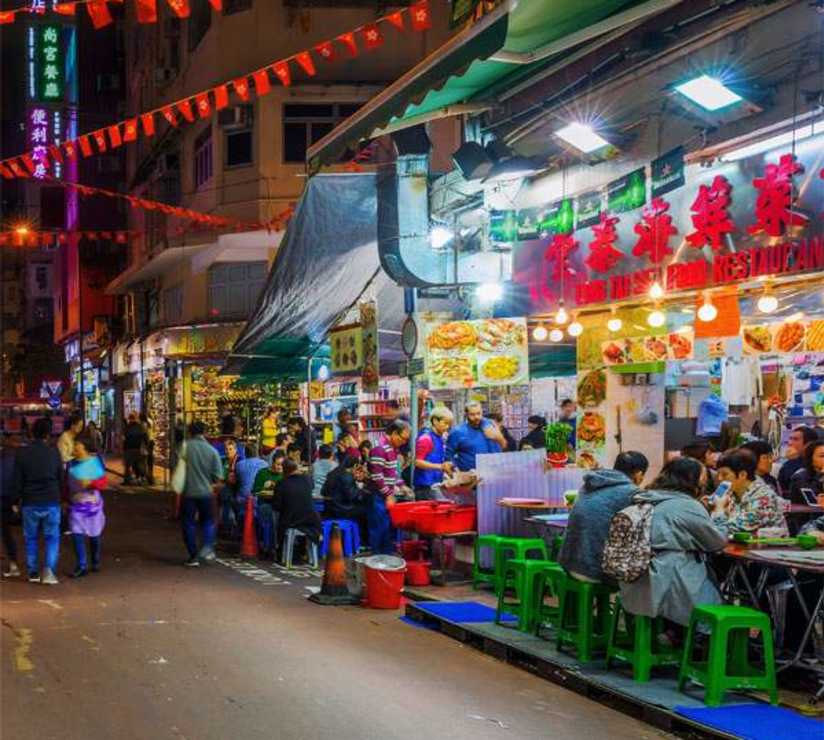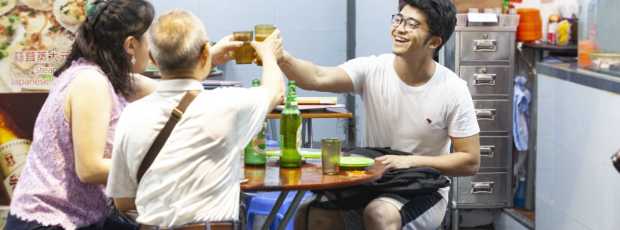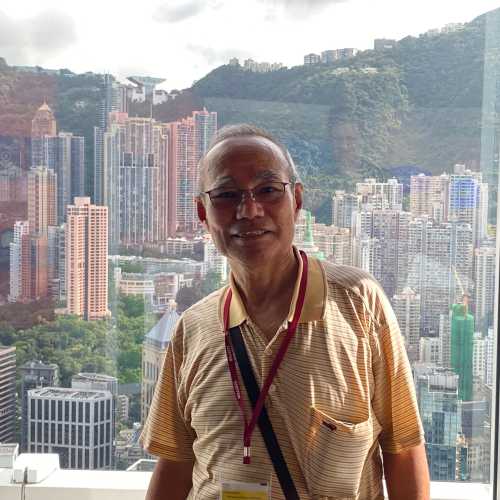Table Of Contents
- The City I Know by Heart
- Is Victoria Peak Still Worth It? (Yes, If You Do This)
- Wong Tai Sin Temple: Beyond the Tourist Prayers
- Temple Street Night Market: My Nighttime Ritual
- A Day Around Tsim Sha Tsui: Museums to Ferry Views
- Ocean Park vs. Disneyland: Local Perspectives
- Stanley Market and Southern Districts
- Wong Tai District and Traditional Culture
- Lantau Island: Beyond the Big Buddha
- Central District: Colonial Heritage and Modern Finance
- Wan Chai: Where Old Meets New
- Nightlife: Lan Kwai Fong and Beyond
- Seasonal Celebrations and Natural Areas
- Main Street Culture and Daily Life
- If You Only Have a Weekend: My Honest Shortlist
- Hong Kong Places That Stay With You
The City I Know by Heart
I've lived in Hong Kong for thirty-four years, and people still ask me about the best places in Hong Kong as if there's a definitive list. The truth is, this city changes you as much as you learn to navigate it. What feels essential shifts with the seasons, your mood, even the time of day you're walking through Central.
When friends visit Hong Kong, they arrive with phones full of screenshots highlighting the same famous places in Hong Kong. Victoria Peak, Temple Street, Wong Tai Sin Temple. These aren't wrong choice; they're classics for good reason. But after decades of showing visitors around, I've learned that the most memorable places to go in Hong Kong are often the ones that catch you off guard.
The Hong Kong I want to share isn't just the postcard version. It's the city where I grab morning coffee before tourists wake up, where I know which MTR exit leads to the best pineapple buns, and where I've watched neighborhoods transform while holding onto their essential character.
This entire city exists on 426 square miles, yet manages to layer experiences from our British colony heritage to modern towering skyscrapers that define today's city's skyline.
Is Victoria Peak Still Worth It? (Yes, If You Do This)
Victoria Peak remains one of the most famous places in Hong Kong, offering the definitive view of Victoria Harbour and our towering skyscrapers. But timing changes everything.
Most people ride the Peak Tram during midday, when crowds are thickest and afternoon haze obscures views. I prefer going just before sunset, when the city transitions from business to evening energy.
The Sky Terrace 428 costs extra, but free viewing areas on the Peak Circle Walk offer equally stunning perspectives of Victoria Harbour without crowds pressed against railings. I usually walk the circle path instead of staying at the main platform.
If you're planning to visit, book tram tickets online to skip queues. The alternative is taking a taxi or the 15 bus from Central, which costs a fraction of the tram fare and gives harbor views during the climb.
Quick answer: Victoria Peak offers Hong Kong's most iconic view of Victoria Harbour, best experienced near sunset with advance booking.
Wong Tai Sin Temple: Beyond the Tourist Prayers
Wong Tai Sin Temple draws millions of visitors annually, but most rush through without understanding its significance to local culture. This Taoist temple, rebuilt in the 1970s, represents how Hong Kong places adapt ancient traditions to urban life.
The temple complex includes the Chi Lin Nunnery in nearby Diamond Hill, representing Buddhist traditions alongside Taoist practices. Chi Lin showcases Tang Dynasty architecture using traditional wooden construction methods, creating a serene contrast to the surrounding residential towers.
What most visitors miss is the fortune-telling area behind the main temple, where practitioners use traditional methods passed down through generations. This is genuine spiritual consultation that locals rely on for major life decisions.
Looking for a private city experience in Hong Kong?
Explore the city with a local who plans a private day just for you; no groups, no scripts.
Temple Street Night Market: My Nighttime Ritual
Temple Street after dark is where Hong Kong's night market tradition lives on. The fortune tellers still spread cards under string lights, and street food sizzles, but now it's a mix of tourists and locals who remember when this was purely neighborhood territory.
I come here between 8 and 10 PM, when dinner crowds have thinned but late-night energy hasn't fully kicked in. Start from the Jordan Road end and work toward Kansu Street.
The clay pot rice (when you can find it) reminds me of family dinners from decades past. I usually eat at the dai pai dong (licensed street food stalls) rather than tourist-focused restaurants along the edges.
A Day Around Tsim Sha Tsui: Museums to Ferry Views
Tsim Sha Tsui gets dismissed as too touristy, but this neighborhood showcases Hong Kong to the world beautifully. Tsim Sha Tsui East extends the waterfront experience with newer developments and additional harbor views.
I start most days here at the Hong Kong Cultural Centre or Space Museum. The Hong Kong Cultural Centre hosts world-class performances, while the Space Museum's planetarium shows are surprisingly moving, especially those about light pollution and urban astronomy.
The Hong Kong Palace Museum, our newest cultural institution, houses treasures from Beijing's Forbidden City. The building's design reflects both Chinese heritage and contemporary Hong Kong architecture.
The Avenue of Stars along the waterfront was renovated recently, and while more polished, harbor views remain unmatched. This is where you want to be for the Symphony of Lights show at 8 PM.
Walking tip: The best sightseeing in Hong Kong often happens between major attractions, where layers of local life exist alongside tourist infrastructure.
Ocean Park vs. Disneyland: Local Perspectives
Hong Kong Ocean Park and Hong Kong Disneyland represent different approaches to family entertainment. Ocean Park combines marine life education with thrilling rides, while maintaining stronger connections to local culture and conservation efforts.
Ocean Park sits on the southern coast, offering dramatic ocean views alongside its attractions. The park's educational focus on marine conservation resonates with Hong Kong's maritime heritage, while Toy Story Land at Disneyland appeals to families seeking pure entertainment.
Both parks showcase how Hong Kong places adapt international concepts to local preferences and geography.
What if your day in Hong Kong was planned by someone who knows it — and you?
City Unscripted matches you with a local host who creates a private experience based on your interests, not a set route.
Stanley Market and Southern Districts
Stanley Market on Hong Kong Island's southern coast offers a more relaxed shopping experience than central tourist areas. The market combines souvenir shopping with genuine local life, as Stanley serves both tourists and expatriate residents.
Sai Kung on the eastern New Territories provides dramatic contrast to urban Hong Kong. This area offers hiking trails, secluded beaches, and seafood restaurants serving catches from local waters.
Cheung Chau island, accessible by ferry, maintains its fishing village character while accommodating day-trippers seeking beach time and traditional architecture.
Wong Tai District and Traditional Culture
The Wong Tai area encompasses several neighborhoods where traditional Hong Kong culture persists alongside modern development. Shau Kei Wan on Hong Kong Island preserves fishing heritage through its markets and temples.
Kowloon City offers authentic regional Chinese cuisine, particularly Thai and Southeast Asian restaurants that serve workers and families rather than tourists. This area shows how Hong Kong accommodates diverse communities within its urban framework.
Lantau Island: Beyond the Big Buddha
Lantau Island rewards patient exploration beyond the obvious attractions. Tung Chung serves as the gateway via Hong Kong International Airport, but the island offers much more than transit convenience.
The Ngong Ping Cable Car provides spectacular views during the 25-minute journey to Po Lin Monastery and the Big Buddha. Ngong Ping Village at the top creates a cultural theme park experience, but the actual monastery operates on different rhythms.
Po Lin Monastery includes vegetarian dining and morning prayer sessions open to visitors. The monastery represents how Hong Kong preserves spiritual traditions within modern tourism infrastructure.
Tai O fishing village demonstrates traditional stilt house architecture and fishing practices adapted to contemporary economic realities.
Tip
We match you with the right host, not just any guide.Want to experience the real Hong Kong with someone who lives there?
A fully private experience, planned and led by a local host who tailors the day to you
Central District: Colonial Heritage and Modern Finance
Central showcases Hong Kong's evolution from British colony to international financial center. Colonial buildings like the former Legislative Council building coexist with contemporary towering skyscrapers housing global banks.
Hong Kong Park provides green space within the urban core, featuring traditional Chinese gardens, greenhouse conservatories, and bird-watching opportunities. The park shows how Hong Kong integrates nature with dense development.
The Hong Kong Observation Wheel offers harbor views from a different perspective, though it lacks the historical significance of the Star Ferry or the elevation of Victoria Peak.
Wan Chai: Where Old Meets New
Wan Chai survived development pressures that transformed much of Hong Kong Island. Historic buildings like the Blue House demonstrate successful heritage conservation that keeps structures alive rather than turning them into museums.
The wet market on Cross Street operates every morning except Sunday. It has become one of my favorite places to understand Hong Kong's food culture. Vendors source ingredients from across Asia, teaching lessons about quality and seasonality.
Happy Valley Racecourse represents Hong Kong's British colonial legacy adapted to local gambling culture. Wednesday evening races attract both expatriates and locals for social events that blend tradition with contemporary entertainment.
Nightlife: Lan Kwai Fong and Beyond
Lan Kwai Fong remains Hong Kong's most famous nightlife district, though it primarily serves expats and tourists rather than local residents. The area demonstrates how Hong Kong places create distinct entertainment zones within the broader urban fabric.
Tung Choi Street (Ladies' Market) in Mong Kok offers different energy; daytime shopping for locals and tourists, transitioning to evening street food and casual dining.
Local nightlife happens in neighborhood tea restaurants, mahjong parlors, and karaoke establishments that serve residents rather than visitors seeking authentic experiences.
Ready to plan your perfect day in Hong Kong?
Start your experienceSeasonal Celebrations and Natural Areas
Hong Kong's Mid Autumn Festival transforms public spaces into celebration venues. Hong Kong Park, Victoria Park, and waterfront areas host lantern displays and cultural performances that bring communities together.
Tai Mo Shan, Hong Kong's highest peak, offers hiking opportunities and perspectives on the entire city from above the usual tourist viewpoints. The mountain demonstrates Hong Kong's surprising natural diversity within urban boundaries.
The Wetland Park in Tin Shui Wai provides environmental education and bird-watching opportunities, showing how Hong Kong balances development with conservation efforts.
Main Street Culture and Daily Life
Hong Kong's main street culture happens in neighborhood centers rather than designated tourist areas. Modern amenities integrate with traditional commerce in ways that serve residents' daily needs.
Markets, tea restaurants, and family-run businesses create community centers where multiple generations interact and maintain cultural continuity despite rapid urban change.
These everyday Hong Kong places reveal how eight million people create home within one of the world's most densely populated cities.
If You Only Have a Weekend: My Honest Shortlist
When friends visit for just a weekend, I focus on contrasts that reveal Hong Kong's essential character. Day one should combine Victoria Peak views with street-level exploration in Wan Chai or Sheung Wan.
Day two might include Wong Tai Sin Temple for spiritual culture, Stanley Market for relaxed shopping, or Ocean Park for family entertainment, depending on interests and energy levels.
The key is allowing time between planned activities for unexpected discoveries. Hong Kong's most memorable experiences often happen in transitions; walking between MTR stations, waiting for ferries, or getting lost in elevated walkways.
Weekend strategy: Focus on contrasts; iconic views paired with neighborhood exploration, traditional culture balanced with contemporary creativity.
Hong Kong Places That Stay With You
After decades of living here, I've noticed that the best places in Hong Kong aren't necessarily the most famous. They're places that help you understand something essential about how this city works and why people choose to call it home.
The places that stay with people tend to be where they witnessed something unexpected—traditional ceremonies in modern settings, conversations with locals sharing perspectives, or moments of beauty emerging from organized urban chaos.
Hong Kong experiences layer different activities within compact geography. You can start with traditional congee in a neighborhood tea restaurant, spend afternoons in contemporary galleries, and end evenings watching the Symphony of Lights from century-old ferries.
The places to visit in Hong Kong that matter most connect you to the city's ongoing story rather than just past achievements. This is where eight million people have figured out how to live together on 426 square miles, creating energy, creativity, and resilience that visitors sense even during brief stays.
Final insight: The most meaningful places to go in Hong Kong are often where you stop trying to see everything and start paying attention to how this extraordinary city actually works.
Elsie Leung writes about Hong Kong from the perspective of someone who has watched the city evolve while maintaining its essential character. Her recommendations focus on authentic experiences that reveal Hong Kong's complexity beyond tourist checklists.
What if your day in Hong Kong was planned by someone who knows it — and you?
City Unscripted matches you with a local host who creates a private experience based on your interests, not a set route.
Want to experience the real Hong Kong with someone who lives there?
A fully private experience, planned and led by a local host who tailors the day to you










